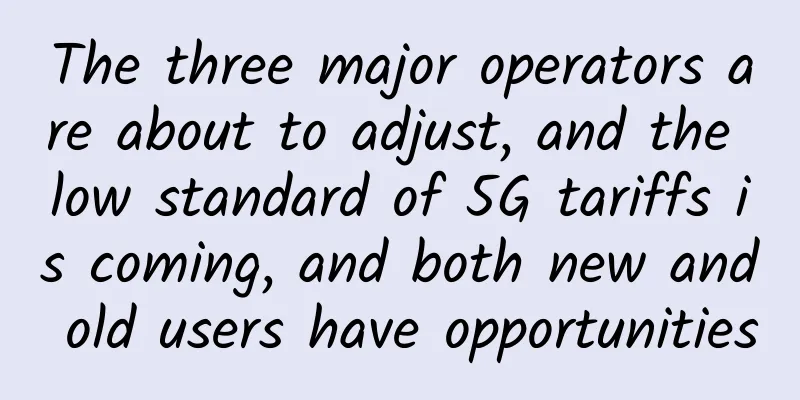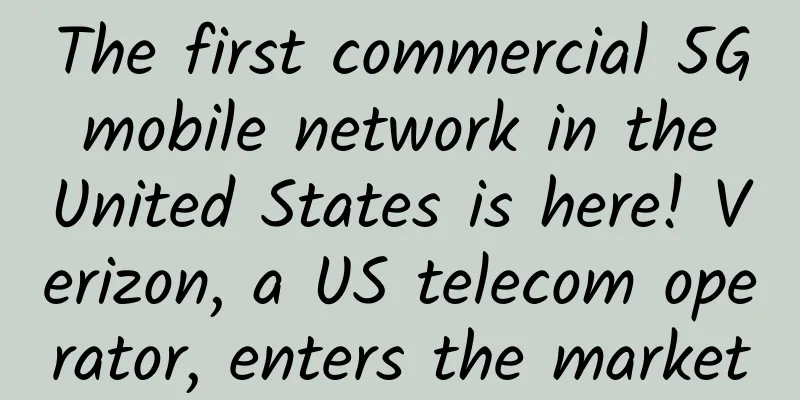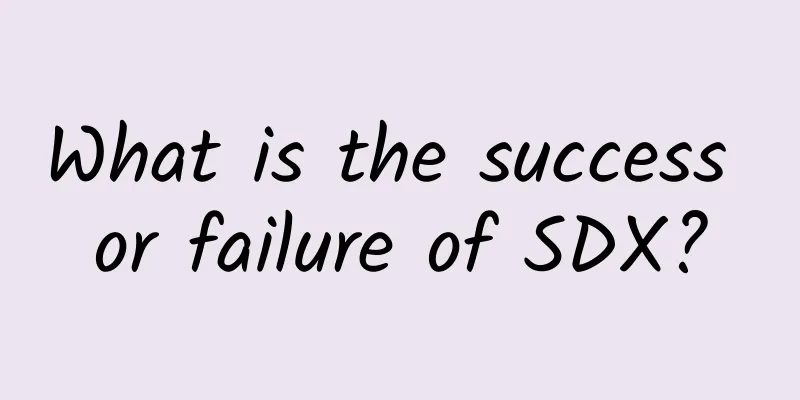F5G, not so mysterious

|
This article is reprinted from the WeChat public account "Xianzao Classroom", the author is Xiaozaojun. Please contact the WeChat public account of Xianzao Classroom to reprint this article. What is F5G? F5G stands for The 5th generation Fixed networks. Before F5G, were there F1G~F4G? In fact, there was no F1G~F4G before F5G was proposed. When F5G was proposed, experts put the previous fixed-line technologies into a category and defined F1G~F4G. From F1G to F5G, the differences are as follows: How did F5G come about? Before 2019, there was no F5G in the world. In 2019, with the rapid development of 5G, fixed network experts believe that there are three international organizations, ITU, 3GPP and GSMA, coordinating actions in the field of mobile communications. ITU is responsible for technical research and spectrum allocation, 3GPP is responsible for generational definition and standard setting, and GSMA is responsible for industrial cooperation and development. The cooperation among the three has created the glory of the mobile communications industry and 5G. In contrast, in the field of fixed-line networks, organizations such as ITU, IEEE, ETSI, BBF, and OIF are each responsible for their own areas. There is no close coordination mechanism, and no clear generational division and evolution roadmap has been provided, which has largely hindered the development of fixed-line technology and its applications. So they decided to set up a new organization to take the lead in the coordinated development of fixed-line technology and promote the standardization of technology. In the second half of 2019, 10 companies including China Telecom, China Academy of Information and Communications Technology, Huawei, Telecom Italia and Portugal Telecom jointly initiated the establishment of the F5G working group. The initiative was approved by ETSI (European Telecommunications Standards Institute) in December. In February 2020, ETSI announced the establishment of the ETSI F5G ISG (ISG: Industry Specification Group). The kick-off meeting of the working group was held on February 20-21, and the group members elected Dr. Luca Pesando (Telecom Italia) as Chair and Dr. Jiang Ming from China Academy of Telecommunications Research as Vice Chair. ETSI F5G ISG Organizational Structure (The picture was taken at the CIOE China Optical Expo on-site forum where Dr. Jiang Ming gave a speech. The same applies below) Currently, ETSI ISG F5G has 7 WIs (standard research projects), and Release-1 will be released around the end of this year. The first white paper of F5G is also expected to be released soon. ETSI ISG F5G work progress The F5G organization is also expanding rapidly. As of August 2020, it has 45 members. Members of F5G What is the industrial vision and key features of F5G? When ETSI F5G ISG was first established, it proposed the industry vision of "Fibre to Everywhere". At the same time, they also defined three key features of F5G: FFC, eFBB, and GRE:
With comprehensive fiber infrastructure, we help extend the fiber business boundary to every room, every desktop, and every machine, and fully expand vertical industry applications. The business scenarios have expanded by more than 10 times, the number of connections has increased by more than 100 times, and 100,000 connections per square kilometer have been achieved.
With the help of more advanced technologies, the network bandwidth capacity can be increased by more than ten times, and symmetrical broadband capabilities in both upstream and downstream can be achieved, realizing Gigabit homes, 10 Gigabit buildings and T-level campuses.
It supports zero packet loss, microsecond latency, and 99.999% availability. Together with AI intelligent operation and maintenance, it meets the ultimate service experience requirements of home and enterprise users. In short, F5G has the characteristics of deterministic large bandwidth, massive connections, low latency and zero packet loss, and can provide high-quality network connection services through wide coverage. What are the representative technologies of F5G? 10G PON, Wi-Fi 6, 200G/400G, OXC, NG OTN, etc. 10G PON: Passive optical network technology is currently gaining popularity. Many provinces are now promoting Gigabit home broadband, which is based on 10G PON technology. For details, please see here: A Brief History of PON Wi-Fi 6: No need to explain, right? Note: By the way, the "three gigabits" often mentioned by operators and equipment manufacturers now refer to "gigabit 5G + gigabit WiFi + gigabit broadband". Gigabit WiFi is Wi-Fi 6, and gigabit broadband is 10G PON (although the name is 10G PON, the user-side rate is 1Gbps). 200G/400G: The 400G that is often mentioned. It mainly refers to the backbone bearer network to further promote the implementation of single-wavelength and large bandwidth. OXC: optical cross-connect. Operators are now promoting the upgrade of ROADM networks (details) to OXC all-optical cross-connect networks, replacing the increasingly complex fiber connections of ROADM with all-optical backplanes, achieving fiber-free and fully interconnected optical ports. To put it simply, all-optical network 2.0. NG OTN: Next-generation OTN (Optical Transport Network). China Telecom’s M-OTN is this thing, an enhanced version of OTN with lower latency, higher efficiency, support for lossless bandwidth adjustment, and more intelligence. What is the relationship between F5G and 5G? F5G and 5G are different concepts and there is no affiliation between the two. In other words, F5G does not belong to 5G, and 5G does not belong to F5G. Some people say, "5G is a network in the sky, while F5G is a network on the ground." Although this statement is not very rigorous, it does make sense. 5G is a mobile communication network technology that focuses on wireless and mainly serves access by mobile terminals such as mobile phones. F5G is a fixed communication network technology with an emphasis on wired networks, and its main business is fixed-line fiber-optic broadband access. F5G and 5G share some common technologies and networks. F5G can effectively collaborate with 5G, complement each other, and enhance users' network perception. What is the relationship between F5G and all-optical network? Many people think that F5G is all-optical network, just with a different name. I personally disagree with this statement. I think that neither the all-optical network nor the all-optical network 2.0 that is now more often mentioned can be completely equivalent to F5G. The name of the all-optical network is an advanced version of "optical in, copper out". At that time, it mainly promoted the fiberization of access networks, such as FTTH (fiber to the home). In addition to the access network, the all-optical network also emphasizes the full opticalization of the aggregation layer and backbone layer. In addition to the opticalization of transmission lines between nodes, the All-Optical Network 2.0 emphasizes the all-optical switching of transmission nodes, completely eliminating the conversion of optical and electrical signals. The All-Optical Network 2.0 relies on ROADM and OXC technologies. In comparison, F5G is a more comprehensive concept, an end-to-end concept. It should include the all-optical network (2.0), which is above it. At least in terms of Wi-Fi 6, the all-optical network does not include Wi-Fi 6. What is the significance of F5G? First throw two sets of data: According to the Chinese Academy of Social Sciences, between 2019 and 2025, F5G will directly create an economic added value of 102.688 billion yuan each year and create an indirect economic value of 222.303 billion yuan. A research report from the World Bank shows that every 10% increase in broadband penetration can bring a society's GDP growth of up to 1.38%. To put it bluntly, it's all about economic benefits. We are talking about 5G every day, but in fact, the foundation of all communication networks is still the basic bearer network represented by optical communication. For our users, whether you are using 5G data services or Wi-Fi 6 services, the optical network is behind them. Therefore, the all-optical network is a good thing, and F5G and 5G based on the all-optical network are both good things. Everyone is talking about the application scenarios of 5G every day. In fact, the application scenarios of 5G can basically be copied to F5G. It can even be said that F5G may be better than 5G. F5G and 5G share the mission of empowering hundreds of industries. There is huge market demand and broad application scenarios in various fields such as home, transportation, education, medical care, energy, finance, and industrial manufacturing. In the tide of new infrastructure, the cooperation between F5G and 5G will be a normal state. They will not only greatly improve the life experience of ordinary users, but also promote the digital transformation of the industry and contribute to the high-quality growth of the social economy. |
<<: How does Sentinel intercept abnormal traffic?
>>: A "versatile" network tool - Access Control List (ACL)
Recommend
Linux TCP/IP protocol stack, data sending and receiving process, TCP protocol characteristics
It is no exaggeration to say that today's Int...
Stay at home and have fun during the Spring Festival without worrying about WiFi.
Many of my friends stayed at home during the Spri...
The computing power network came into being, and the service model will change from "resource-based" to "task-based"
The 21st century is a period of vigorous developm...
SmartHost: VPS 40% off, starting from $1.7/month, 29 computer rooms, optional AMD Ryzen+NVMe, optional large hard disk
SmartHost has just launched a Memorial Day 40% OF...
PacificRack: $14.55/year KVM-2GB/100GB/7TB/Los Angeles data center
PacificRack has recently released some unusual pa...
my country's broadband users reach 510 million: 100M rate reaches 91.5% and Gigabit users exceed 14 million
[[419885]] What's the bandwidth of your home ...
RackNerd: Los Angeles AMD Ryzen 3900X+DDR4+NVMe annual payment starts at $30
The information about RackNerd providing AMD Ryze...
In-depth analysis of SSL digital certificates to protect corporate websites
An SSL certificate is a type of digital certifica...
5G is entering a period of explosive growth, and it is time for millimeter wave to debut
[[433374]] In 2021, the global 5G network constru...
Introduction and solution of TCP sticky packet and half packet (Part 1)
In network transmission, sticky packets and half ...
Cisco Global Senior Vice President Jeetu Patel: Webex virtual experience is 10 times better than face-to-face experience!
[51CTO.com original article] Cisco recently organ...
NASA thinks the moon will soon have its own internet
It's been nearly 50 years since astronauts la...
Ma Xiaofang from Xunlei: I yearn for a manager who is like a "stabilizing force"
[51CTO.com original article] In order to pay trib...
5G and satellite, what is the relationship?
[[353771]] This article is reprinted from the WeC...
[5G Encyclopedia] How does 5G implement TDD?
The theme of this issue of 5G Encyclopedia is: Ho...









